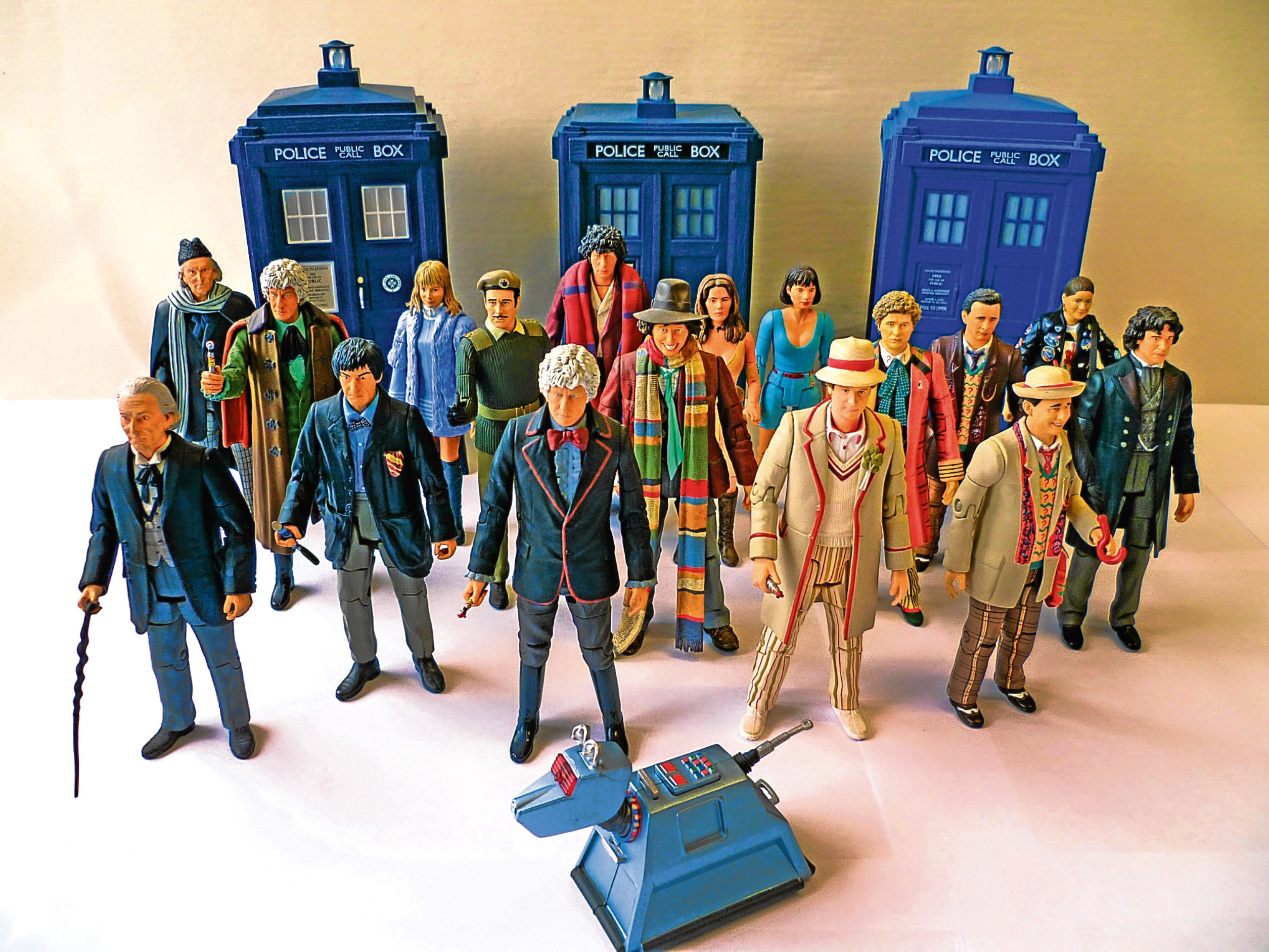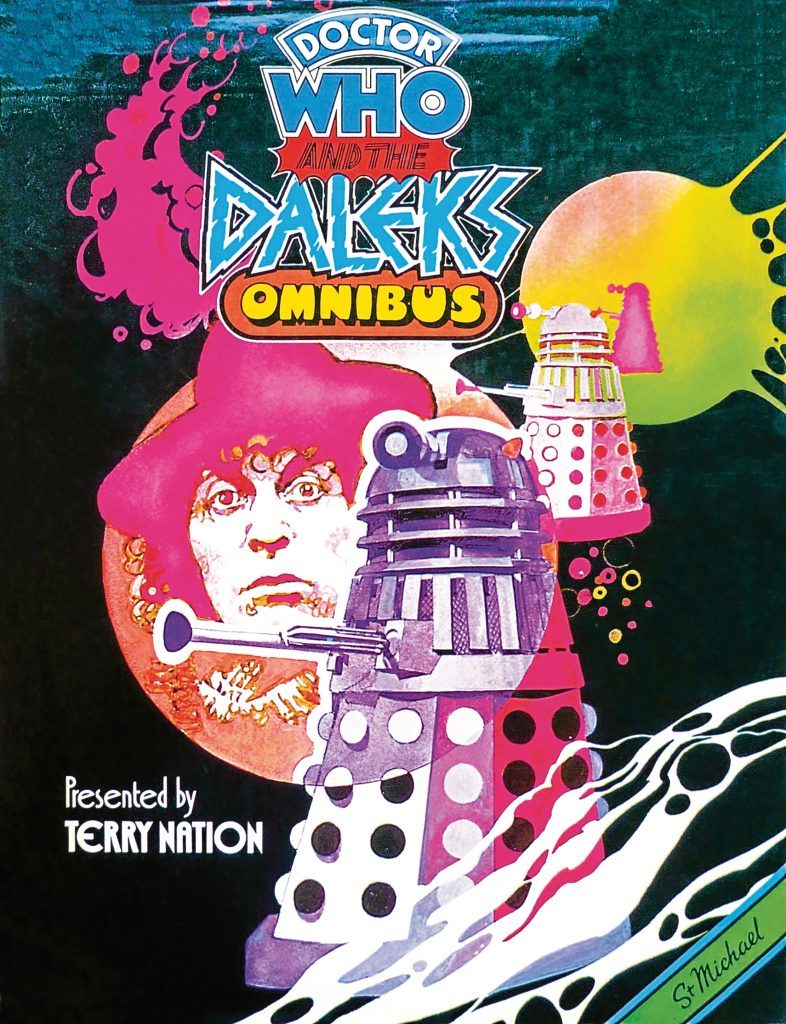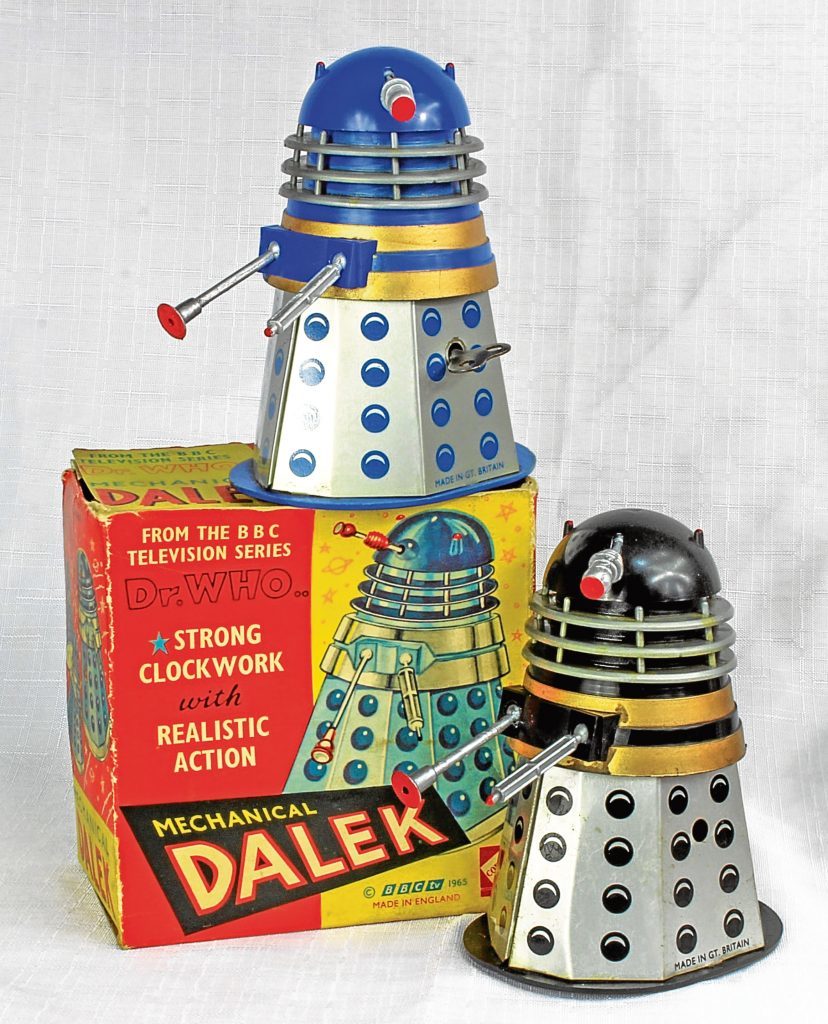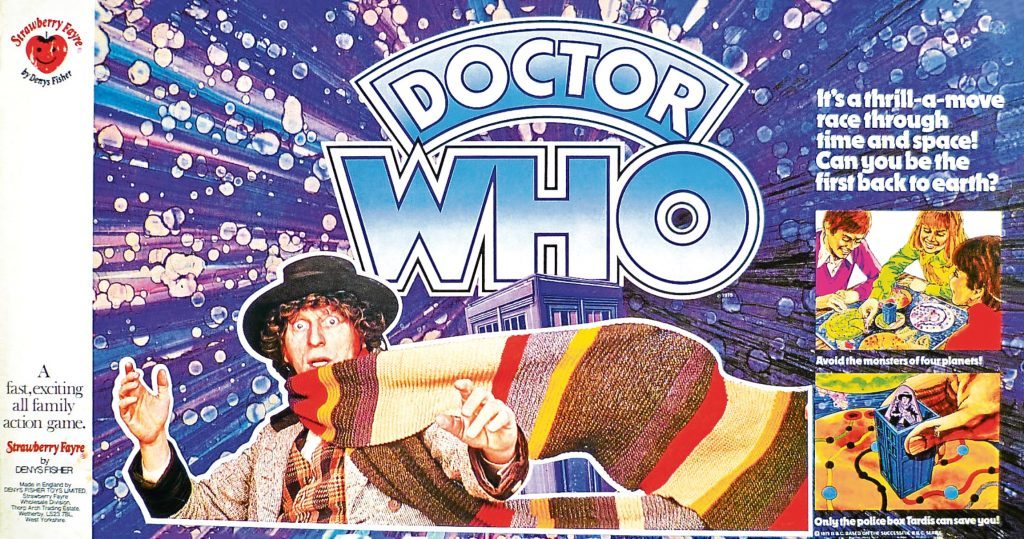
I THOUGHT I’d let a small fortune slip through my fingers.
Chatting with Paul Berry about his new book Doctor Who Memorabilia and how some items can be worth thousands, I remembered two jigsaws I had in the mid-70s.
One depicted the rather-unimaginatively-named Giant Robot, the other two “mummy robots” from the classic Pyramids Of Mars story.
Knowing they’d gone to a jumble sale decades ago, I suspected this expert on all things Time Lord-related was about to tell me I’d passed up a packet.

So I was delighted when I asked Paul what they’d be worth today and he laughed: “Depending on condition, 10 pounds maybe?”
First appearing on our screens more than half a century ago, Doctor Who has spawned more merchandise than almost any other TV programme in history.
But the BBC were slow to cash in, with Paul explaining: “Before my time, in the 60s, there was a big explosion of interest in the Daleks for a couple of years, they even called it ‘Dalekmania’.
“There was quite a lot of stuff available and that was why they did the two films with Peter Cushing, but then the merchandising all but fizzled out.
“The BBC just wasn’t very commercialised. Unlike Star Trek in the States, they made the show but didn’t think of cashing in on it. There were a few annuals and the odd jigsaw like yours.
“When you consider how many characters there have been, it’s amazing they didn’t start making action figures until the late 80s and only now have they really got into that.
“It got a boost from the explosion in sci-fi merchandise caused by Star Wars, but even then it wasn’t like Star Wars which you saw everywhere, the Doctor Who stuff was more low-key.
“Then in the 90s, we only had one film starring Paul McGann, so it became very backward-looking and most of the stuff was nostalgia-based.
“However, back when the episodes were first shown, there was no way of watching them again or catching up on one you’d missed, so when they started releasing them on VHS around this time, it gave people a chance to go back.
“But when it came back with Christopher Eccleston, and especially David Tennant, it went crazy and it’s impossible to keep up with collectibles now.”

Everything from Cyberman slippers to Doctor Who cereal has been produced, and Paul says: “There are the icons of Doctor Who that always sell, like the Tardis and the Daleks.
“The 60s stuff will always be collectible because of the scarcity — it was just disposable in those days and would get thrown out.
“What you collect usually depends on what era you got into the programme but Tom Baker stuff is always collectible.
“But folk are nostalgic for Eccleston and Tennant!
“Everything you could think of has come out with Doctor Who stuck on it. Some just silly, like the Doctor Who Mister Men books.
“But they go from cheap things like Top Trumps card games to chess sets that cost a couple of thousand pounds. The most- expensive things would be full-size Daleks or a Tardis.
“I’ve been collecting since the mid-80s, but I stopped gathering stuff from the new series as it was overwhelming how much was coming out.
“There are things from the 60s that are just too expensive, and I keep mulling over getting a full-size Tardis, but whether it’d fit in the living-room, I don’t know!

“It’s been on my radar for some time, but it’s a question of finances as they’re about four grand. That said, I must have spent 10 grand since I started collecting.
“And you’ve got to have your wits about you as there’s a lot of fake stuff. A guy was trying to flog me a Dalek a few months ago that he swore was original and it was nothing of the sort.
“If you started collecting now, you’d have to focus. If you were trying to collect across the whole 50 years, it’d be overwhelming.
“I’ve got hundreds of items, into the thousands if you count individual magazines, and storage has become a problem!”
Doctor Who Memorabilia by Paul Berry, published by Amberley, is available now.

Enjoy the convenience of having The Sunday Post delivered as a digital ePaper straight to your smartphone, tablet or computer.
Subscribe for only £5.49 a month and enjoy all the benefits of the printed paper as a digital replica.
Subscribe